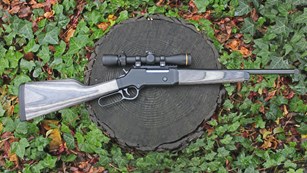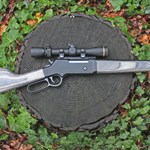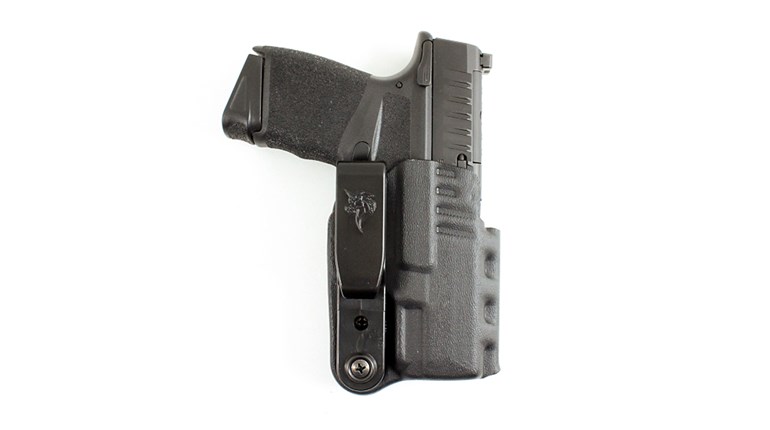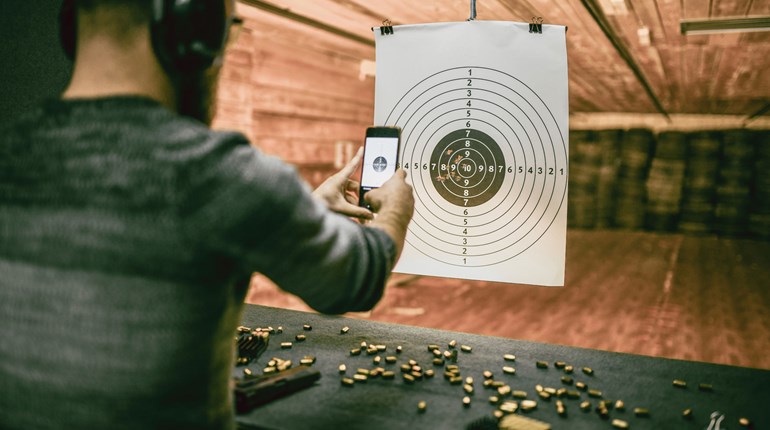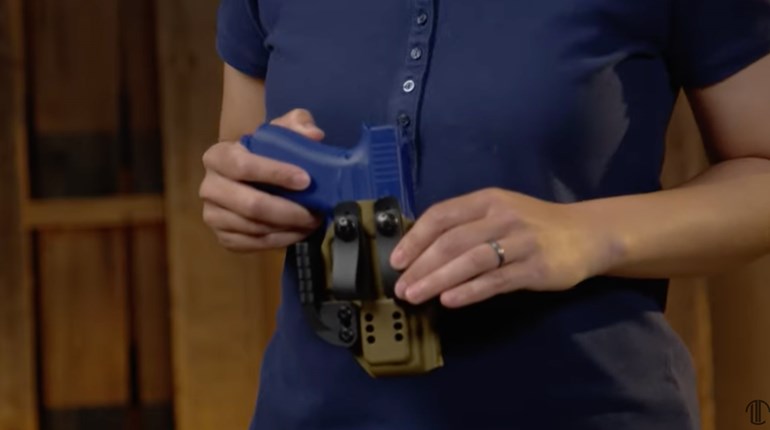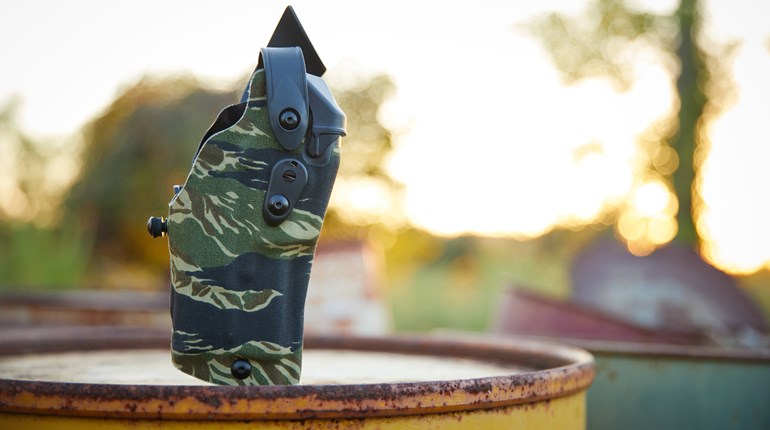The array of holster styles on today’s market is mind numbing—IWB, OWB, concealed carry, open carry, pocket, shoulder, appendix, ankle, thigh, chest rig, paddle, retention, belly band, optic-ready, leather, nylon, polymer, and many more. And if each holster maker produces multiple rigs for every model of firearm, the count becomes exponential. But it’s OK! Abundance of choice is an American trait. Choice is a hallmark of a free market economy, and as it pertains to holsters, an innovative, competitive firearm industry. Besides, without so many choices, how would we gun owners accumulate the unenviable box of holster rejects—rejects we hold onto like dresses two sizes too small that we are sure will one day again magically fit.
Inherent in this multitude of choices is the acknowledgement that all holsters are not created equal, at least when it comes to safety. In this short Langdon Tactical Discover Series video, “Choosing a Safe Holster,” PHLster Holster’s Sarah Hauptman points out that “Just because it’s for sale doesn’t mean it’s safe.” Statistically speaking, more negligent discharges happen during re-holstering a drawn firearm, or more specifically, careless re-holstering. While it always falls on the operator to employ the rules of firearm safety to minimize the safety risks, there are a few simple qualities one can look for in his or her holster to further lessen the risk.
Sarah outlines the three basic functions of any holster:
- Fully and completely cover your trigger
- Retain the holster securely in your gun, and the holster securely to your body
- Offer a safe method of re-holstering a drawn gun
In the video, Sarah very succinctly dissects each of these requirements that make for a safe holster, and offers solutions for alternatives to potentially unsafe choices. For example, if you employ a soft holster like many of the belly bands, learn why they might not be a good option, and why you should look for a holster with a rigid mouth. She’ll also explain why it’s imperative to have a clear, unobstructed path for your firearm as you re-holster.
While having many choices is a good problem to have, choosing safe gear is incumbent on the operator. Ultimately it is your responsibility to make sure your holster contributes to the safe operation of your firearm.
For more videos like this, check out LangdonTactical.com/discover.
—Ann Y. Smith, Editor in Chief










